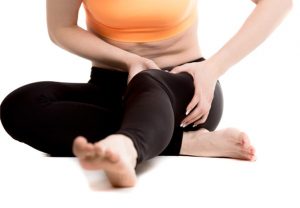I’m going to be honest here and admit that even before I had finished writing the below article I knew it was probably going to be one of a series. There are so many widely-held beliefs about exercise that are totally incorrect, it was difficult to decide which ones to choose for this piece!
In no particular order, here are some myths about training you have probably heard…and maybe even repeated yourself!
1. Exercise is the most important factor in losing weight
Now don’t misunderstand; regular exercise is essential for a healthy and happy life (helping to reduce the risk of heart disease, cancer, and many more conditions), is a very important part of improving body composition (fat/muscle) and is certainly a great help when trying to lose excess bodyweight as well.
But there is no point in exercising for weight loss if you have a crappy diet.
If you are able to eat healthy foods in quantities that mean you are ingesting less energy than you are burning off, you will lose weight. Training will be a part of this burning of energy, but it is very, very easy to negate the amount of calories you have burned in a session by making poor food choices.
Let’s take a hypothetical female who burns around 1500 kcals (calories) a day simply by being alive. Let’s say she hits the treadmill for an hour. She will probably burn something in the region of 500 kcals in that hour. She would have burned at least 50 or 60 calories anyway during that time so the net result for her is a loss of, at most, 450 calories. All she has to do to cancel out the calorie burn from an hour of running…is to have a butter croissant and latte from Starbucks.
This is not to say exercise is pointless, it’s incredibly important and for someone who is eating properly, it can make all the difference in the world with regards to weight loss. But if you are eating a lot of excess calories you can see from the above how difficult losing weight is going to be, no matter how hard or how long you train.

2. Old people shouldn’t exercise
There is a strange perception that only people within a very narrow age-bracket should train to stay healthy, get strong or improve mobility and stability. People over 60 will often be told to get their exercise only from things like walking, gardening or golf. Over my years as a coach I have trained dozens, perhaps hundreds, of older people (from their 60s to their late 80s) and I was often surprised at the reactions from certain people about it. “They’ll hurt themselves”, “They shouldn’t be doing anything strenuous” etc.
Certainly, someone who qualifies for a bus pass will need an appropriate personalised programme. They will also need attentive, qualified instruction.
But the benefits from training (and particularly strength training, ie weights) can be extraordinary. Proper training can make older people more robust, more stable and have a better quality of life. It can mitigate some of the negative effects of the ageing process such as loss of bone density and muscle wastage. It can help with stress and improve mood. And there are even signs that exercising may reduce the chances of developing certain diseases such as Alzheimer’s.
3. Soreness is a sign of a good workout
This is one I have to talk about regularly! It is certainly understandable that a lot of people tend to associate the soreness they sometimes get after training (known as DOMS) with having had a good workout.
DOMS stands for Delayed Onset Muscle Soreness. Most scientists agree that it is caused by microscopic damage to muscle tissue, and it generally happens because of a shock to the system. If you do something unusual (play a sport you haven’t played before / do an exercise you haven’t done in ages / perform more sets, more reps or use more weight, etc) you may well be rewarded with a lot of muscle soreness a couple of days afterward. But it has nothing to do with how good or bad a workout was, or how effective. Being sore doesn’t burn more fat nor makes you stronger or bigger. The cellular damage that leads to being very sore has no connection with how hard you worked or how much effect the session is going to have on your body once the soreness has gone away. Chronic soreness can obviously negatively affect your next training session if it hasn’t healed, so it is not something that you should be hoping for!
Most of the fittest, strongest people I know very rarely experience extreme soreness from training. Their programmes involve very intense work and multiple training sessions in a week, but increases and changes are managed in a sensible and gradual manner.
Getting really sore from a workout is easy. Pick an activity you haven’t done before and do a silly amount of it. Boom, you’re sore. But you haven’t really benefitted from it, have you? You just can’t walk.
Training should be planned in such a way that you don’t have a huge increase in any of the training variables (duration, intensity, etc.) in a short time. If you are always very sore from training there is probably something that needs to be looked at is how you are programming your workouts.

4. People with back pain should avoid training their lower back, or even avoid exercise altogether
Again, a common thing to hear. Usually from people who mean well but aren’t exercise or injury specialists.
There are lots of reasons that a person can suffer from lower back pain, and obviously each individual case is different. But the reality is that the majority of people will suffer from some kind of back pain over the course of their life, and a sedentary lifestyle and general lack of movement is undeniably a huge factor in many cases. We will hear the same thing all the time from people who come to train with us and were often quite nervous at the beginning; “My back was sore all the time until I started training. I was apprehensive but now after a few months of exercise, my back hasn’t hurt in ages”.
Another big problem is often that the area is weak. If a body part is weak, it is more prone to injury. This is a fact. It is completely understandable that someone who has suffered from chronic pain in a certain part of their body is reluctant to perform exercises that involve that body part, but a qualified trainer or coach will be able to gradually strengthen the area in a safe and appropriate way, and ultimately make it less sore and less likely to become injured in the future.
5. Intervals/HIIT have a big effect on your metabolism afterward
Sometimes, the health/fitness industry can go through phases where certain types of training become extremely popular for a few years, while other methods go out of fashion. A good example is the recent trend of always favouring short, high intensity efforts over longer-duration, moderate-intensity work (i.e. sprinting rather than longer runs).
This is not always ideal for a number of reasons, depending on what you are training for (if you are training for performance in a sport, you will almost certainly need a decent aerobic foundation and this can only come from longer duration, lower intensity cardio).
If the reason you are performing intervals or High Intensity Interval Training (HIIT) is simply weight loss, then you will probably have heard that it will “boost your metabolism long after the session is over”, and while that may be true in a scientific sense, any increase in the rate you burn calories will be minimal in a real-world context.
This is a common problem in the fitness industry. Scientific journals publish papers based on research that is carried out in a clinical setting, but then some of these findings are either misunderstood or deliberately misinterpreted in order to “sell” a new training method.
Let’s take the same hypothetical female trainee we used to illustrate an earlier example. We’ll have her perform a 20-minute interval session, alternating high-intensity 15-second sprints with 45 seconds of rest. Without knowing much about her, let’s give a very rough estimate that she could burn up to 250 kcals in that session.
But won’t she burn even more calories in the hours after training, you say? Yes she will. Approximately ten percent of what she expended during the session. So, about 25 kcals.
The famous HIIT “metabolism boost” from that session is equivalent to about a quarter of a banana.
The purpose of this piece is to illustrate that there is no substitute for eating properly, exercising appropriately and ignoring all the hype and misinformation that surrounds our industry. Find a reputable, qualified coach/ trainer that doesn’t try and sell you the latest magic pill or mind-blowing gadget, but instead puts a strong emphasis on the basics of eating and training. If it sounds too good to be true it probably is!



